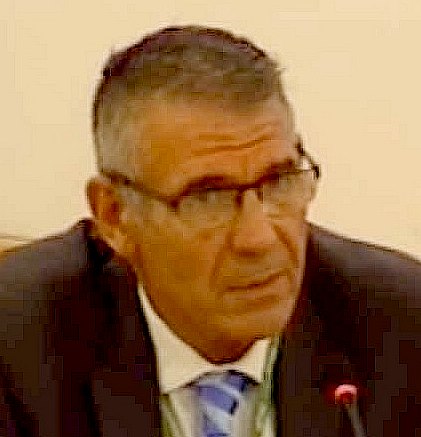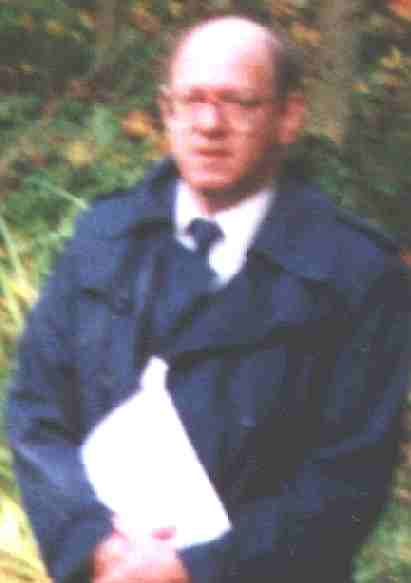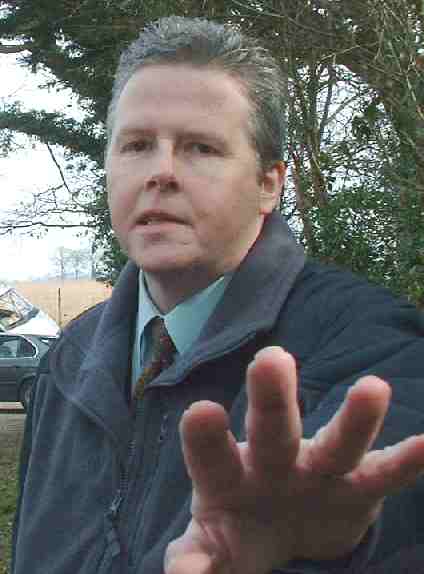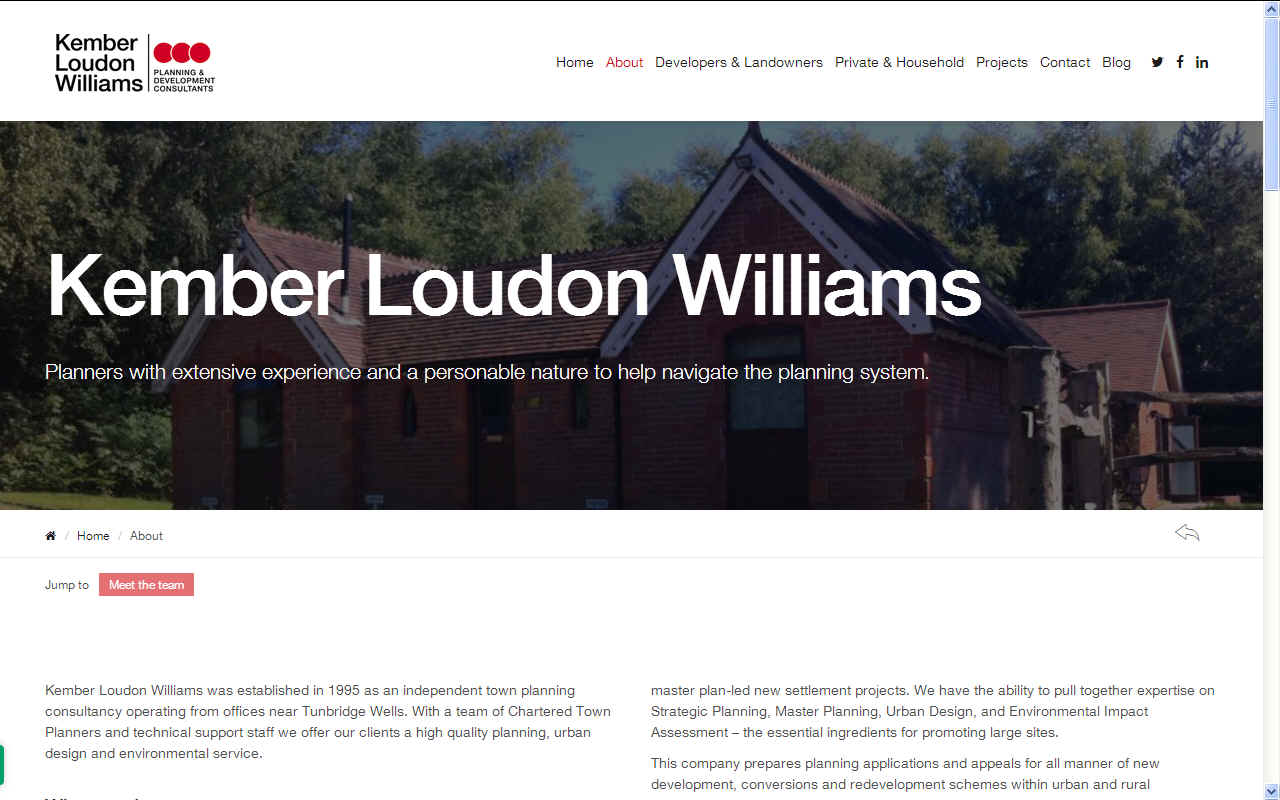|
JULIAN BLACK
|
|
HOME | CASE STUDIES | LAW | NEWS | POLITICS | RIGHTS | SCANDAL | SITE INDEX | WHISTLEBLOWING |
|
Julian Black was one of the planning officers working for the Wealden District Council when they were doing all they could to come to terms with the Report by Archaeology South East from 1999.
It is alleged that Mr Kruschandl had a meeting with Mr Black at Wealden's Hailsham offices when the citizen was told in no uncertain terms that he could go on fighting for another 10 years if he wanted, the clear inference being that this Council had no intention of letting a little thing like the truth get in the way of their agenda since 1984 to ruin the occupier of the generating buildings at Herstmonceux for so long as he was the occupier.
We must assume then that Mr Black was working with Ian Kay, J D Moss and David Phillips to that end, because that is where the evidence points. Unless of course Mr Black would care to shed some light and tell his side of the story - in confidence if you wish Mr Black. We are of course hoping that you may blow the whistle or confirm or deny receipt of some kind of financial package on leaving WDC that may prevent disclosure?
JULIAN BLACK - Former planning officer at Wealden District Council is now working for Kember Loudon WIlliams where we hope that he is more helpful to his clients than he appears to have been to Nelson Kruschandl when they met in 2001. They were of course trying times and many recruits are spoon fed information, rather than the whole picture.
CORRESPONDENCE 2001
Two letters out of a series of correspondence that included many officers and councillors of Wealden District Council are reproduced below with reference to PPG16 and the need to consult with statutory consultees of which English Heritage (now Historic England) is one.
According to his employers website, Julian Black (BSc(Hons) Dip(UrbDes) MRTPI is a partner of their firm of planning experts who joined that company in 2002.
Mr Black is said to have many years experience of both urban and rural planning within local authorities, which must be the case, except that we do not known how long he stayed at Wealden. This partner has worked on Local Plan policy preparation, covering urban and rural environmental. His bias is for green belt, conservation and town centre redevelopments. As you will see from the correspondence he was not quick to reply to a member of the public concerning permitted development rights - and please note that these rights have been increased considerably since the introduction of the Climate Change and Sustainable Energy Act 2006 and Climate Change Act 2008.
Mr
Black has advised on Neighbourhood Plans, the evaluation of major residential, leisure and commercial developments, including town centres, business parks and industrial schemes.
ATT: Julian Black
FAX REF: 01323 443333
REPAIRS
I write with reference to my letter to Mr Moss dated 11th October and Mr Brown’s letter in reply dated 12th October 2001. C.C.
Cllrs: Blaxland, Brown,
REPAIRS
Thank you for your letter dated 31st October 2001 received today.
C.C. Cllrs: Blaxland,
Brown,
Kelvin Williams, Victorio Scarpa, David Whibley, Julian Black, Daniel Goodwin
Christine Nuttall, David Phillips, Douglas Moss, Ian Kay, Charles Lant
Abbott Trevor - Alcock Charmain - Ditto - Arnold Chris (Christine) - Barakchizadeh Lesley - Paul Barker - Black Julian - Boakes Beverley Brigginshaw Marina - Brown Ashley - Coffey Patrick - Douglas Sheelagh - Dowsett Timothy - Flemming Mike - Forder Ralph - Garrett Martyn Goodwin Daniel - Henham J - Holness Derek - Hoy Thomas - Johnson Geoff - Kavanagh Geoff - Kay Ian - Kay I. M. - Barbara Kingsford Lant Charles - Mercer Richard - Mileman Niall - Moon Craig - Moss Douglas, J. - Nuttall Christine - Pettigrew Rex - Phillips David - Scarpa Victorio Scott Trevor - Kevin Stewart - Wakeford M. - Whibley David - White, George - Williams Kelvin - Wilson Kenneth - White Steve
CIR 8/87
Historic buildings and conservation areas - policy and procedures
PPG15
PPG 15 advised local planning authorities on the treatment of historic buildings and the wider historic environment within the planning process. It was introduced in November 1990 following public outcry after a number of high-profile scandals such as the threatened destruction of the Rose Theatre in London by developers. It replaced the earlier Circular 8/87 which was criticised for being ill-focused in both practical and geographical terms. Circulars 01/2001 and 09/2005, which discuss arrangements for handling heritage applications and that amend the existing PPG 15: Planning and the historic environment, were published September 1994.
PPG16
Planning Policy Guidance 16: Archaeology and Planning commonly abbreviated as PPG 16, was a document produced by the UK Government to advise local planning authorities in England and Wales on the treatment of archaeology within the planning process. It was introduced in November 1990 following public outcry after a number of high-profile scandals such as the threatened destruction of the Rose Theatre in London by developers. It replaced the earlier Circular 8/87 which was criticized for being ill-focused in both practical and geographical terms. On 23 March 2010 the Government published 'Planning Policy Statement 5:Planning and the Historic Environment' replacing and
canceling PPG16 and PPG15 which had dealt with the rest of the historic environment.
PPS5
Supersedes Planning policy statement: consultation. Consultation paper on a new planning policy statement 15: planning for the historic environment (DCLG, 2009); PPG 15: Planning and the historic environment (DETR, 1994) and PPG 16: Archaeology and planning (DOE, 1990). To be read with PPS 5 planning for the historic environment: historic environment planning practice guide and PPS 5: planning for the historic environment - impact assessment (both DCLG, 2010). Superseded by National planning policy framework (DCLG, 2012).
https://en.wikipedia.org/wiki/PPG_16
CONTACTS
Kember Loudon Williams LLP E: enquiries@klw.co.uk
Vicarage Lane, Hailsham,
East Sussex, BN27 2AX T: 01323 443322
|
|
This site is free of © Copyright except where specifically stated. Any person may download, use and quote any reference or any link, and is guaranteed such right to freedom of information and speech under the Human Rights and Freedom of Information Acts. However, be aware that we cannot be held liable for the accuracy of the information provided. All users should therefore research matters for themselves and seek their own legal advice and this information is provided simply by way of a guide. Horse Sanctuary UK Limited.
|











